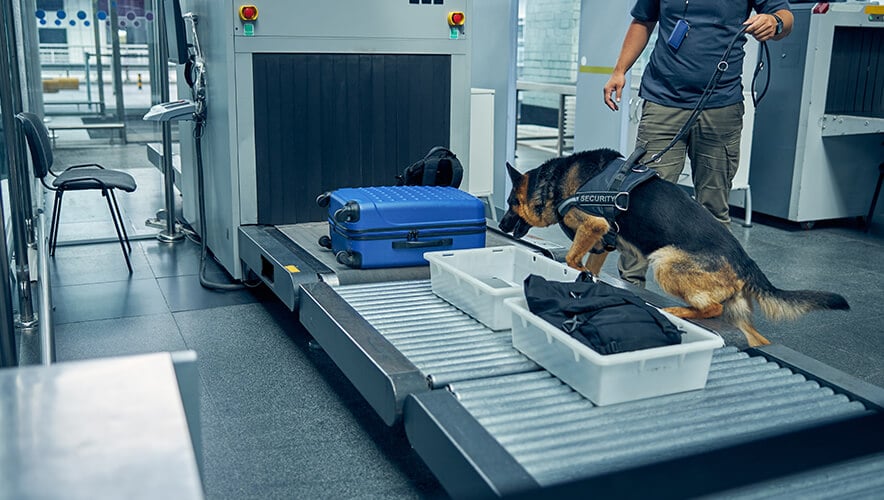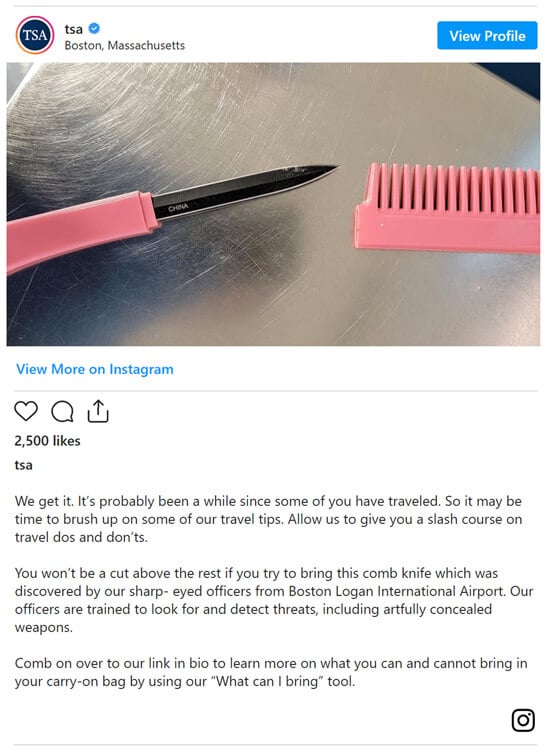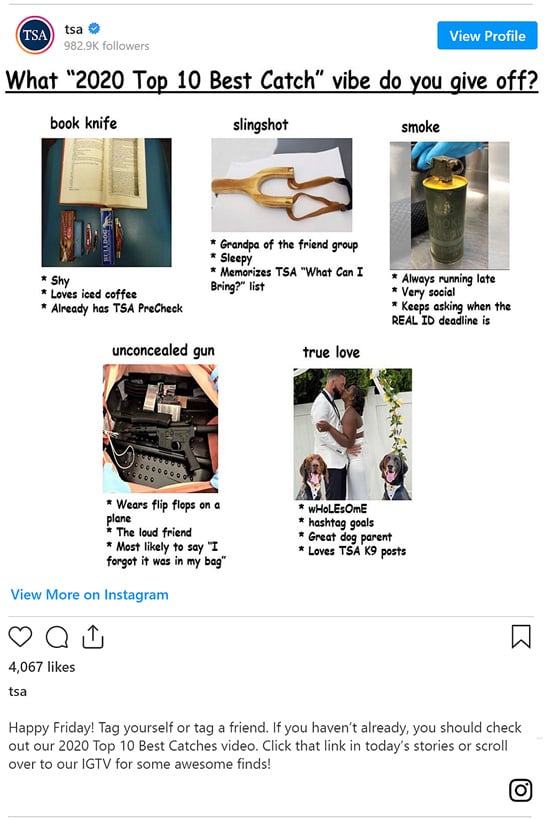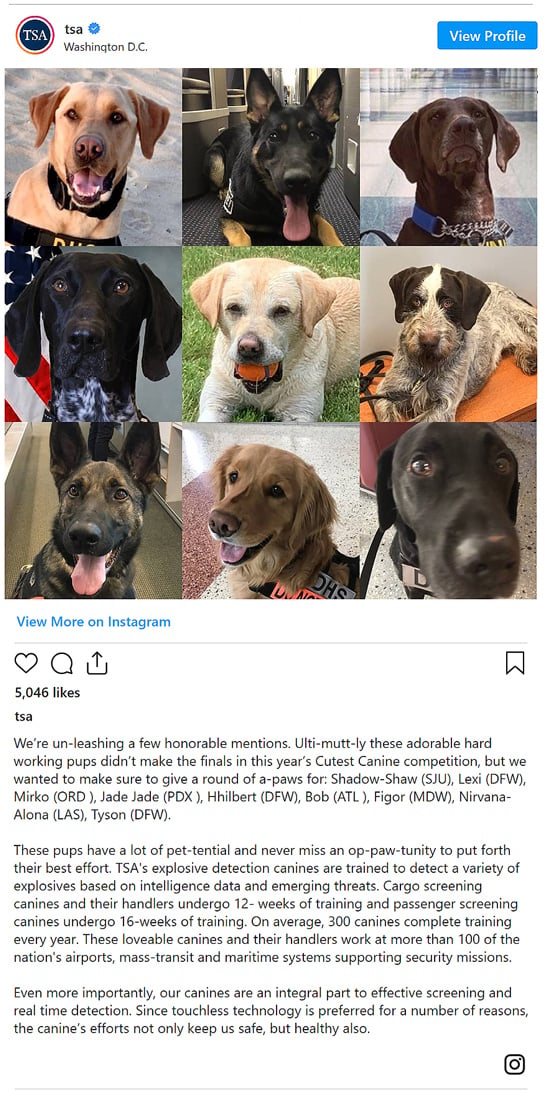A Cut Above the Rest: Using Puns to Promote Security Awareness
The European Commission gave a major greenlight to international travel this spring, after officials said all 27 EU member states will begin to accept travelers who have received COVID-19 vaccines approved by the European Medicines Agency.
While an exact date for the full resumption of international travel has not been announced, airports and travel bureaus are preparing for increased travel during the summer months in the United States, where more than half of all U.S. adults have received at least one COVID-19 vaccination dose.
The U.S. Transportation Security Administration (TSA) posts daily checkpoint travel numbers that show how travel is returning in the United States. For instance, on 28 April 2021, 1.18 million travelers passed through a TSA checkpoint compared to 119,629 on the same day in 2020 and 2.26 million in 2019.
With that resumption in travel, however, may come anxiety and uncertainty about what’s allowed to pass through a TSA checkpoint at the airport. And for security practitioners themselves, some may be wondering how best to share updates with travelers and visitors so they can prepare accordingly.
To gain some insights, Security Management Senior Editor Megan Gates spoke with Emily Bonilla-Pieton, the current social media lead for TSA—an agency that is part of the U.S. Department of Homeland Security—about how it uses its celebrated Instagram account @TSA (listed by Rolling Stone as one of the top 100 Instagram accounts in the world) to communicate and engage with travelers and nearly 1 million followers about important security information. Their conversation has been lightly edited for clarity.
How long have you been with TSA? And how has the TSA’s Instagram changed since first created back in 2013?
Bonilla-Pieton. I’ve been with TSA for close to 15 years and on our social media team for the last two years. As a team lead, we have a group of four—four team members that are mission-driven, creative individuals that value their communication towards the public and supporting the agency’s initiative and policies.
The most important part of Instagram, specifically, is a tone that is agreeable to the audience and that the public responds well to. In 2012 and 2013, Blogger Bob Burns started the Instagram account and did a fantastic job of highlighting the off-the-wall items people were trying to take through security. Using dad humor, puns, and wit, it was received really well by the public.
So, once they’re learning that people try to take these items through, they’re also understanding the policy…that’s when we can provide a call to action where we’re asking them to go somewhere else [like TSA’s website] for more information.
We’ve seen some of the photos of items that TSA officers have seized. How do you get those photos? And how do you decide which ones to post?
Bonilla-Pieton. We have more than 430 airports nationwide and relationships between the airports and regional spokespeople. Through those, we receive these images of things that were discovered at a checkpoint to build our library.
Annually, we try to collect our Top Ten Finds or Catches of the Year. It’s an annual event where we take all the unique items—interesting finds—and create a short video and share that on Instagram.
This past year we had what we called “Baby Shark in a Water Tank.” It was a dead baby shark in a jar of water. We also had a slingshot and a replica of an alarm clock shaped as dynamite sticks.
To put a pleasant twist on prohibited items, our number one post this past year was a love story between two canine handlers. They met at work, fell in love, and got married during the pandemic. The dogs were groomsmen. That was one of our most popular stories.
“With our role, we take great pride in the relationships we nurture on the platform.”
A lot goes into not only posting the images themselves, but also putting together a plan for posting them and maintaining engagement with your audience. How do you do that?
Bonilla-Pieton. We plan ahead, daily, weekly, and monthly. We collect for the daily social media holidays—it’s almost unbelievable the number of holidays that have been created, so we try to tie in the current social media following of the day.
We also develop campaigns, such as Prohibited Items Week. Especially as we’re seeing people get more comfortable travelling, we’re seeing more guns at checkpoints. This has served as a reminder to let us remind you of some beneficial travel tips as you’re getting comfortable to fly again—providing do’s and don’ts.
We also do the Cutest Canine campaign. We’ve been doing this for two years, and it’s in August. We invite the audience to participate in voting for the cutest canine. We spend a whole month talking about canine handlers, the work of TSA canines, what happens when they retire, and what happens when they’re done with work for the day.
The winner is decided, and it goes all the way down to a regional and local airport competition—so it’s for bragging rights.
During the past year with some of the major changes we’ve all experienced, tensions have also run high in response to new safety requirements—especially masks on airplanes. How do you engage with your audience to make them aware of new requirements and policies while traveling?
Bonilla-Pieton. With our role, we take great pride in the relationships we nurture on the platform. The audience reaches out to us with questions, and we know that an informed and educated traveler is a better traveler. We never defend the TSA, but we are transparent in our mission and our goals, and we provide guidance and best practices.
For mask mandates, we have to enforce certain rules, so we try to say with posts: “Hey, this is what to expect and this is how to properly wear the mask per CDC.” We noticed that the visuals do help support this to make it as smooth as possible.
SM: For security practitioners themselves looking to use social media to increase awareness about policies and procedures, do you have any best practices or guidance to share?
“My best recommendation for a successful messaging program is learning how to use all the different features. ”
Bonilla-Pieton. On Instagram, specifically, you always should take into consideration that the platform is evolving. It’s our due diligence to keep up with the trends and changes in the algorithm. Our Instagram account, our tone, and messaging hasn’t changed much. But it’s evolved from pictures to IG stories to reels for travel tips and then to IGTV that provides for longer videos and travel tips.
My best recommendation for a successful messaging program is learning how to use all the different features. Also make sure you’re using your hashtags correctly to find those new followers and get into those discover me pages to get new potential followers.
Also, the first hour after posting is very critical for responding to comments. Each platform has a different audience and a different age demographic. It’s easy to do one post and share it on all platforms. But each platform is expecting you to gauge your communication to that audience differently. The takeaway for our team has been that this is not a nine-to-five gig. This team is working around the clock, observing different trends, and how to put a twist on them to be relevant but be able to stick to our mission.
Facebook, for example—most people on this platform remember what it was like to travel before 9/11, so content has to be more specific and catered to those needs.
Instagram has a sense of humor—witty and clever—and they might have been too young when 9/11 happened to have traveled. With the good catches [agents make at checkpoints], we give them a reminder of why our agency is so important.
Megan Gates is senior editor at Security Management. Connect with her at [email protected]. Follow her on Twitter: @mgngates.



